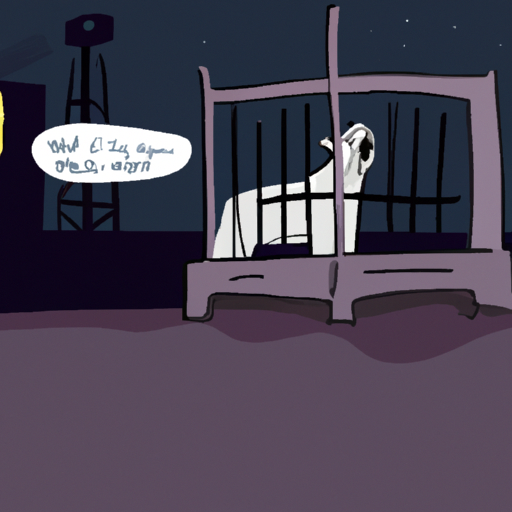As a dog caregiver, it can be distressing when your furry friend won’t stop barking in their crate. But don’t worry, this guide will help you understand the reasons behind this behavior and offer solutions to help both you and your pet find peace.
Understanding Why Your Dog Barks
Understanding your dog’s behavioral cues is the first step towards solving this problem. Here are a few reasons:
- Separation Anxiety: Dogs are social animals. They might feel anxious when left alone, causing them to bark incessantly.
- Boredom or Lack of Exercise: Dogs need stimulation, both physical and mental. A lack of it can lead to excessive barking.
- Hunger or Thirst: If your dog is hungry or thirsty, they may bark to get your attention.
- Fear or Discomfort: If the crate is uncomfortable or if your dog associates it with fear, they may bark as a distress signal.
How to Comfort Your Dog
There are several strategies you can use to comfort your dog and reduce their barking:
- Create a Comfortable Environment: Make the crate comfortable with a soft bed and their favorite toys. Additionally, cover the crate with a blanket to create a ‘den-like’ environment.
- Regular Exercise: Ensure your dog gets regular exercise. A tired dog is less likely to bark.
- Feeding Schedule: Stick to a regular feeding schedule so your dog doesn’t get hungry in the crate.
- Positive Reinforcement: Reward your dog when they’re quiet in the crate. This encourages them to associate the crate with positive experiences.
Training Techniques to Reduce Barking
Training your dog to feel comfortable in their crate can significantly reduce their barking. Here are some techniques:
Gradual Introduction
Don’t force your dog into the crate immediately. Instead, allow them to explore it at their own pace. Start by placing their food inside the crate and gradually increase the time they spend in it.
Crate Games
Turn the crate into a fun space with games. Hide treats inside the crate or play fetch with toys that go into the crate, encouraging your dog to go in and out freely.
Ignore the Barking
Responding to your dog’s barking can reinforce the behavior. Try ignoring it until they stop. When they are quiet, reward them with a treat or praise.
When to Seek Professional Help
If your dog’s barking persists despite trying the above strategies, it may be time to seek professional help. A canine behaviorist can provide specialized training techniques tailored to your dog’s needs.
Tools to Help Your Dog Feel Comfortable in Their Crate
| Tool | Description |
|---|---|
| Crate Cover | Provides a sense of security and reduces visual stimuli |
| Comfortable Bed | Ensures your dog is comfortable |
| Puzzle Toys | Provides mental stimulation and reduces boredom |
FAQ
Q: Should I use a bark collar?
A: It’s generally recommended to try training techniques first. Bark collars can cause distress and further anxiety in dogs.
Q: My dog barks as soon as I leave. What can I do?
A: Your dog likely has separation anxiety. Gradual desensitization can help. Start by leaving for short periods and gradually increase the time.
Q: How long will it take for my dog to stop barking in the crate?
A: Every dog is different. With consistent training and patience, you should start seeing improvements in a few weeks.
Remember, your dog’s barking is a form of communication. Try to understand what they’re trying to tell you and respond with love and patience. Keep experimenting with different strategies until you find what works best for you and your dog.



